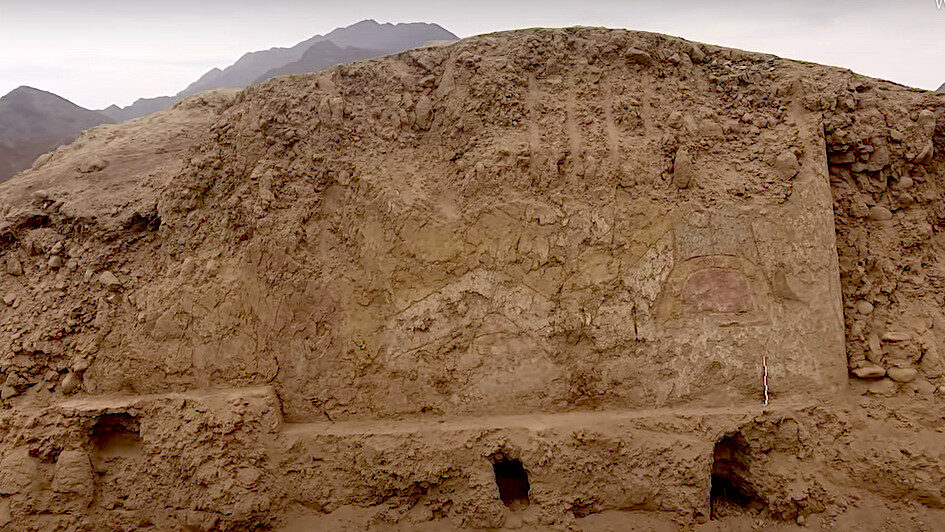
The find was made in November 2020, when farmers seeking to expand their land partially destroyed a huaca — a Peruvian ceremonial structure — sitting among their avocado and sugar cane crops. The huaca, now cut in half, revealed a striking mural.
"What we have here is a shrine that would have been a ceremonial centre thousands of years ago," Régulo Franco Jordán, one of the archaeologists who went about excavating and preserving the elements of the ancient artwork that hadn't been demolished, told the Peruvian newspaper La República.
Jordán estimated the mural was about 3,200 years old and noted that about 60% of the huaca was destroyed. The archaeologists attribute the huaca and mural to the Cupisnique culture, which used spiders as a divine symbol. The Cupisnique inhabited the area, known today as the Virú Valley, for much of the Iron Age. In 2008, a fresco of a divine spider turned up in a temple attributed to the Cupisnique nearby, and other Cupisnique sites have yielded pottery adorned with arachnids.
This site, dubbed Tombalito by Jordán, abuts the Virú River on Peru's northwestern coast. One can just make out a couple of the arachnid's legs and the weapon it wields in one "hand." The red, white, yellow, and grey pigments are just barely distinguishable from the khaki brown soil.
"The spider on the shrine is associated with water and was an incredibly important animal in pre-Hispanic cultures, which lived according to a ceremonial calendar," Jordán told La Libertad. "It's likely that there was a special, sacred water ceremony held between January and March when the rains came down from the higher areas."
There are additional details at the corners of the exposed mural that suggest there is more Cupisnique artwork to uncover besides the sprawling spider. But the team will temporarily cover up the site and return to it for more excavation work as the ongoing pandemic allows.



I do not see a spider or a knife.. :O. Why do they say it is a spider?, why not a man or a mantis?